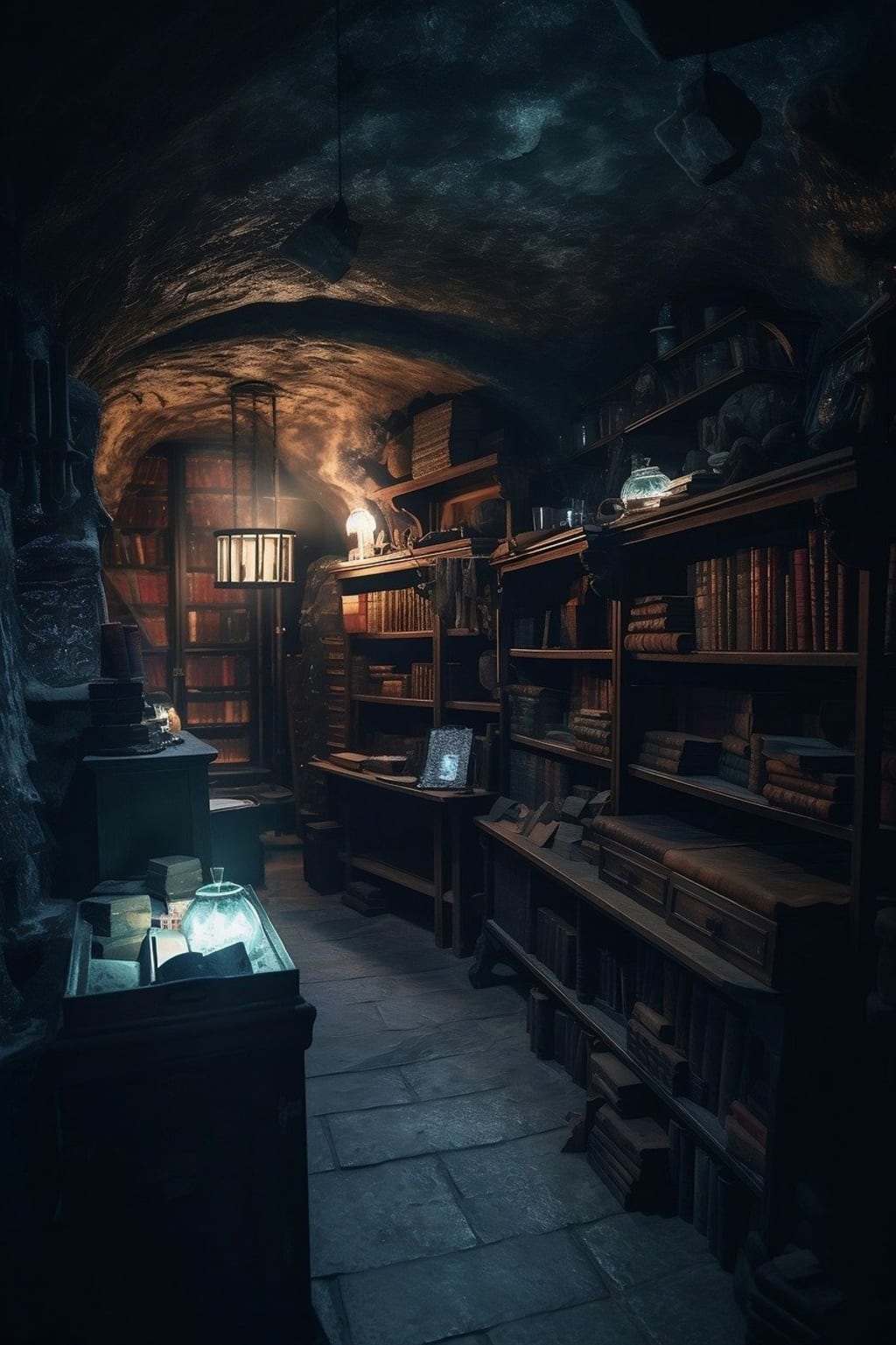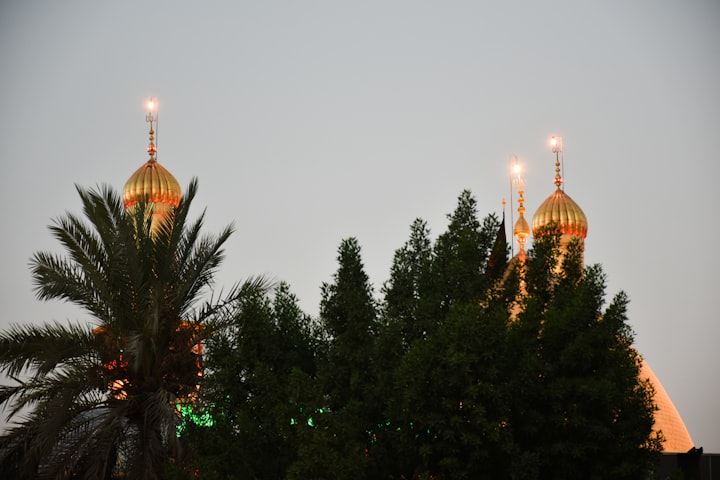5 Real Underground Cities To Inspire Your TTRPG Campaign
When Truth Is Stranger Than Fiction

Underground cities are one of the most common tropes of fantasy and science fiction alike. Whether it's cavernous vaults inhabited by hundreds of dwarves, or a city carved like a hive that uses the natural structure of the stone to support the mass drivers that power a cyberpunk metropolis, these places fire the imagination, and provide a truly unique setting for us to tell some of our more fantastical stories. What makes them so unique is that places like this aren't real... or are they?
While our actual history may not possess settlements that were on scale with places like Moria... we may not be all that far off. If you're looking for some inspiration for your next setting, check out some of the following feats of astonishing engineering for yourself!
#1: Derinkuyu

Imagine you were living in Turkey in the 1960s, and you wanted to do some home remodeling... but when your project got started, you discovered that your house was built right on top of a gateway into a sprawling, underground complex that hadn't seen the light of day in centuries.
While this sounds like the premise for a knockoff of The Exorcist, it's how the underground city of Derinkuyu was found.
And when we say city, we mean city. This complex of tunnels and chambers goes down for 18 stories beneath the ground, and estimates say it could support a community of up to 20,000 people! There were independent living spaces, shops, public areas, a school, and more, along with a source of water that was unreachable from the surface, places for livestock, and more.
The city seems to have been initially built for the purpose of refugee resettlement, but it also provided excellent protection against threats from the world above, and could easily have kept a city's worth of people safe for years, should that have been necessary.
#2: Wieliczka Salt Mine

A massive underground city built in a mine immediately brings to mind the works of Mr. Tolkien, but the Wieliczka Salt Mine is far more impressive than any description of the achievements of fictional dwarves.
Well, most of them, at least.
More than a thousand feet below ground, this salt mine was first established back during the 1200s in Poland, and it operated for centuries, finally ceasing salt mining operations in 2007. That's impressive enough all on its own, but the mine has some of the most bizarre decorations wrought by human hands, including an entire cathedral, religious carvings all along the walls, and even salt chandeliers made by the miners. Open for tourists, the path they are allowed to walk is only a fraction of the 178 miles of total tunnels and passages that exist within the mine.
While it may not have been a true city, in the sense that it wasn't meant to be an independent settlement all its own, with centuries of miners living and dying in this place, it likely has a total population that would boggle one's mind if it were tallied in total.
#3: Petra

While not a truly underground city, Petra (which was originally called Raqmu) is one of the more infamous of lost locations that most people know about these days. Built thousands of years ago, it's been held by the Persians, the Romans, the Greeks, and more, and during its time as an inhabited location Petra held a place of local importance both for its defensability, and for its command of water (something that's extremely important in any desert region).
What led to the Rose City falling into ruin seems to have been a simple matter of economics. Trade routes shifted, cultures changed, and eventually its position (though still very defensible and safe) was no longer an advantageous one. Eventually the inhabitants left, and the grandeur of the city faded into memory, lost to any but the people who still lived in the region. It was re-discovered (to people in the West, at least) in the 1800s, and since then it's been named a site of cultural heritage, and its imagery has been etched into a lot of geek culture... particularly for the city's use as a set in Indiana Jones and The Last Crusade.
#4: Coober Pedy
A more modern underground town that feels a little too strange to be true, Coober Pedy is located in the heart of the Australian outback. Called the opal mining capital of the world, more than half of the town's residents live underground, in a tradition that goes back over a hundred years to some of the earliest miners who swung their picks, and tried their luck.
With bars, churches, homes, and more sunk into the rock, this living, breathing subterranean town exists the way it does for a very specific purpose; because the area's climate is a brutal beast, and the people want to stay as far away from the worst of it as they can. This provides a steady temperature all year round, and even better, it means power draw is relatively small. This lets the town operate off of green energy with relative ease, while not giving up any of their luxuries.
Even more interestingly, there are still opals in the area. And if someone happens to be expanding their home for a new bedroom, or cutting a fresh step, and they find a valuable stone, that's just a little bonus on top of the already sweet deal the town offers its residents.
#5: Beijing Underground

While we've gotten some taste of nuclear tensions here in the 21st century, it's been only the barest inkling of what life was like at the height of nuclear threat. Bomb shelters were as common as inground swimming pools back then, or so it seemed, and people were taking steps to prepare for the worst all over the world.
And in the 1960s, Beijing decided it was going to go big.
Tensions had been flaring with Russia at the time, and China decided it wanted to have somewhere for its citizens in Beijing to go if the bombs dropped. The Underground City is made up of roughly 33 square miles of tunnels, and it was constructed as more than just a military bunker; it was meant to allow people who fled into these tunnels to continue living their lives. Restaurants, schools, clinics, homes, even movie theaters and a roller skating rink were all touted, and it was claimed that the tunnels would be able to hold and shelter all 6 million people who lived in Beijing at the time the tunnels were built.
The underground city never needed to be used, thankfully, but this meant the project fell into decay. Many of the entrances (which were quite plentiful) have been walled up or closed off, and while tourists had been allowed down into the tunnels (which were reported as an eerie place to go), it's been closed for repairs and renovations for years.
Further Reading on Fantasy Cities

If you're looking for more thoughts, ideas, and inspirations when it comes to your own world building, consider checking out some of my other work below!
- 5 Tips For Creating Fantasy Towns and Cities: This article walks readers through the process I use to make settlements in my settings, and marks out some of the pit traps it's all too easy to fall into.
- Archbliss, The Floating City of The Sorcerers: A floating city in the sky, Archbliss has stood above the world for centuries, dispatching its envoys to form alliances, or wage war, depending on the needs of the sorcerers who walk its streets. An anomaly for centuries, it's only recently that lowlanders have been allowed past the city's gates. This supplement is available for both Pathfinder Classic, and Dungeons and Dragons 5th Edition.
- Hoardreach, City of Wyrms: A city atop a strange mountain referred to as a sky island, this regional power is ruled over by a Cooperation of 5, separate dragons. A refuge for the monstrous and the outcast, the skyships of Hoardreach have made it one of the most-sought places in Sundara. This supplement is available in both Pathfinder Classic, as well as Dungeons and Dragons 5th Edition.
- Moüd, City of Bones: A lost ruin in the desert, Moüd was reclaimed through the extensive efforts of the Silver Wraiths necromancers' guild. Maintained by the living dead, the place flourishes with life again... but at what cost? As with above examples, this city is available for Pathfinder Classic or Dungeons and Dragons 5th Edition.
Like, Follow, and Stay in Touch!
That's all for this week's Fluff post!
For more of my work, check out my Vocal archive, and stop by the YouTube channel Azukail Games, where I share a lot of video content. Or if you'd prefer to read some of my books, like my sword and sorcery novel Crier's Knife, my sci fi dystopia thriller Old Soldiers, or my recent short story collection The Rejects, then head over to My Amazon Author Page!
To stay on top of all my latest releases, follow me on Facebook, Twitter, and now Pinterest as well! To support my work, consider Buying Me a Ko-Fi, or heading over to The Literary Mercenary's Patreon page to become a regular, monthly patron. That one helps ensure you get more content, and it means you'll get my regular, monthly giveaways as a bonus!
About the Creator
Neal Litherland
Neal Litherland is an author, freelance blogger, and RPG designer. A regular on the Chicago convention circuit, he works in a variety of genres.
Blog: Improved Initiative and The Literary Mercenary






Comments (3)
Fascinating, the ideas here are great, as usual. Russia is famous for its deep underground, the idea was to build a subway system that could double as an air raid and bomb shelter. I know part of the city under Beijing is being used to house those who can't afford housing on the surface, sometimes they are using the area illegally. So, how about a moral dilemma for the party;; they are hired to clear out an underground complex of squatters, but the squatters don’t want to fight the party, they need the living space because they were displaced by a big monster. If the party engages the4 big monster then they may be able to restore the people their homes, or they could try for a diplomatic solution between the squatters and the above ground people, or they could try and find an new home, elsewhere, for the displaced squatters.
Some other good ones to look at are the Montréal Underground, Paris Catacombs and underground network, The Edinburgh Vaults, the Pilsen Underground, and the Shanghai Tunnels in Portland, Oregon.
Neal this is ingenious and a fascinating read! Kämp Galleria in Helsinki, Finland is another interesting underground space. I think the "danger" of me having an underground dwelling with my 'Cancerian' qualities is that I wouldn't come out very often 😁